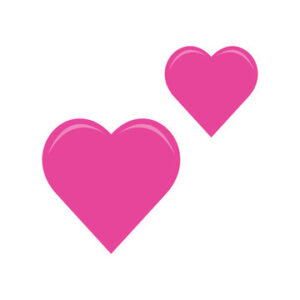Dove emoji is a popular symbol used in various contexts, such as religion, politics, and social media. It represents peace, love, purity, and spirituality. As with any other emoji, its meaning can vary based on the context and the individual’s interpretation. In this article with Impeccable Nest, we’ll explore the dove emoji meaning and provide insights into its usage, significance, and interpretations.

What Does the Dove Emoji 🕊️ Mean?
Throughout history, the dove has been a revered symbol in many cultures and faiths. In Ancient Greek mythology, the dove was considered a sacred creature of Aphrodite representing love and new life. In Christianity, the dove emerged as a key emblem of the Holy Spirit.
Here are some of the common symbolic meanings behind the dove emoji:
Peace and Pacifism 🕊️
The dove emoji, represented by a white dove with outstretched wings and a small olive branch in its beak, has become an iconic symbol of peace and pacifism around the world. The image of the dove carrying an olive branch dates back thousands of years and is deeply rooted in ancient cultures and religions.
In biblical times, the story of Noah’s Ark tells how Noah sent a dove from the ark to search for dry land after the Great Flood. When the bird returned with an olive branch, it was a sign that the waters were receding and the flood was ending. This led to the association of the dove and olive branch with peace and hope.
Today, the dove remains a powerful symbol of peace and nonviolence. It is often used as a representation of international efforts to promote peace, such as the United Nations’ International Day of Peace, which is marked every year on September 21st. The dove and olive branch also appear on the flags of several countries, including Palestine and Syria, as a symbol of their desire for peace and resolution of conflicts.
Sending the dove emoji is a way to express solidarity with those who are seeking peaceful solutions to conflict or hardship. It can be used in social media posts, text messages, or emails to convey a message of hope and support for nonviolent interventions. It serves as a reminder to prioritize diplomacy over aggression, forgiveness over retribution, and reconciliation over retaliation.
In conclusion, the dove emoji represents much more than just a bird with an olive branch. It is a timeless symbol of peace, hope, and humanity’s never-ending pursuit of a better world. By using this emoji, we can all contribute to spreading a message of peace and promoting positive change in our communities and beyond.
Love and Romance 🕊️
The dove emoji, represented by a graceful bird with outstretched wings and a peaceful expression, has become synonymous with the concept of love and romance. This is largely due to its long-standing association with Aphrodite, the ancient Greek goddess of love, beauty, pleasure, and procreation. In fact, doves were considered sacred to Aphrodite, and they were often depicted in artwork and poetry as her animal companions.
As a result of this historical connection, the dove emoji has taken on a variety of romantic connotations in modern times. When used in a romantic context, it can convey a range of emotions and sentiments related to love and affection. For instance, it may be used to express new love or infatuation, indicating that the sender is feeling particularly smitten or head-over-heels for someone. It can also signify a deep and abiding love for a romantic partner, suggesting that the sender is completely devoted to their significant other and willing to do whatever it takes to make the relationship work.
Beyond these specific meanings, the dove emoji is often included in romantic messaging more generally as a way of expressing sweet sentiment and conveying caring and tenderness towards the recipient. When paired with heart emojis or other love-related symbols, it can create a powerful message of love and devotion that can be deeply meaningful to the recipient.
In addition to its connection to Aphrodite and the broader concept of love and romance, the dove emoji is also associated with a number of other positive qualities that are relevant to romantic relationships. For example, doves are often seen as symbols of hope and renewal, suggesting that the sender is optimistic about the future of their relationship and committed to working towards a happy and fulfilling future together. Similarly, doves are known for their fidelity and loyalty, making them a fitting symbol for commitment and faithfulness in romantic partnerships.
Overall, the dove emoji is an incredibly versatile symbol that can be used in a variety of different romantic contexts. Whether used to express new love, deep affection, or simply a general sense of caring and tenderness towards a romantic partner, it is a powerful and evocative symbol that speaks volumes about the sender’s emotions and intentions.
Hope and Optimism 🕊️
The dove emoji, 🕊️, is a popular symbol of hope and optimism. The image of a dove has long been associated with new beginnings, peace, and the Holy Spirit. In Christian tradition, the dove is often depicted as a symbol of the Holy Spirit descending upon Jesus during his baptism, marking the start of a new era and the spread of God’s message to all people.
Given its spiritual connotations, the dove emoji can be used to express faith and hope in difficult times. It is often deployed as a tool for encouragement, signaling a belief that better things are on the horizon despite current challenges. For example, if someone is going through a tough time, sending them a message with a dove emoji might help lift their spirits and remind them that there is hope for a brighter tomorrow.
In addition to its more general associations with hope and spirituality, the dove emoji can also be used to signify resilience in the face of specific challenges. For instance, during the COVID-19 pandemic, many people have used the dove emoji to express their determination to keep going despite the many difficulties posed by the virus. In this context, the emoji can be seen as a way of honoring those who have suffered loss or hardship while also affirming a commitment to moving forward with strength and courage.
Overall, the dove emoji is a powerful symbol of optimism and perseverance. Its association with new beginnings and the Holy Spirit gives it a deeply spiritual resonance that speaks to people across cultures and religions. Whether used to offer encouragement, signal resilience, or simply express a belief in the power of hope, the dove emoji is a versatile and meaningful tool for communication in the digital age.
What Does a Dove Emoji 🕊️ Mean From a Girl?
The dove emoji 🕊️, when used by women in digital communication, generally holds the same meaning as it has throughout history – representing peace, love, hope and femininity. However, in modern times, depending on the context in which it is used, it may convey additional nuances.
Within female friendships, sending a dove emoji can indicate affection and support for a friend. It expresses a sense of camaraderie and solidarity, conveying a message like “I’m here for you” or “I’ve got your back.” It can be used to lift someone’s spirits during tough times or simply to remind them that they are loved and valued.
Romantically, a dove emoji can subtly hint at attraction and growing feelings without explicitly stating them. If a girl sends a dove emoji to someone they’re interested in, they may be trying to communicate their emotions in a way that feels safe and non-confrontational. Similarly, if they receive a dove emoji from someone they’re interested in, they may interpret it as a sign that the other person has feelings for them as well.
Girls may also send the dove emoji to close female friends as a term of endearment. It can be a way of expressing affection and love without using words. It’s a gesture that says “you mean a lot to me” or “I appreciate you,” and it’s often used between friends who have known each other for a long time and have a strong bond.
Moreover, the dove emoji allows women to invoke traditional symbols of femininity, gentleness, and maternity even in digital spaces. It’s a powerful tool that enables women to express warmth, nurture, and hope, regardless of where they are or what medium they’re using to communicate. The use of the dove emoji is widespread across generations, as it embodies timeless values that will always remain relevant.
In conclusion, when a girl uses the dove emoji in digital communication, its meaning is likely to retain its traditional connotations of peace, love, hope and femininity. However, depending on the context in which it is used, it may also convey additional nuances that reflect the sender’s emotions or intentions. Ultimately, the dove emoji is a powerful tool that enables women to express themselves in ways that are meaningful, heartfelt, and authentic.
Does the Dove Emoji 🕊️ Indicate Death or Loss?
The dove emoji 🕊️ has long been associated with peace and hope. The white bird symbolizes purity, innocence, and tranquility, making it a popular image in both religious and secular contexts. However, despite its primary connotations of positivity, the symbol can also be used to indicate mourning and loss.
The dove’s association with death comes from Christian tradition, where it is believed that the soul ascends to heaven in the form of a dove. This imagery appears in Renaissance art, where angels often hold doves as they escort the deceased to the afterlife. Thus, the bird has become a symbol of the soul’s journey beyond this life.
In the digital age, the dove emoji has taken on new meanings related to grief and tragedy. In conversations around death or loss, a dove may be included as a way to express sympathy or to commemorate someone who has passed away. Following high-profile deaths or tragic events, social media users have adopted the dove as a symbol of remembrance.
Despite its association with death, the dove remains a hopeful symbol. Its core meaning is still one of peace and the possibility of an afterlife. When used in the context of mourning, the dove emoji can represent not only the loss of life but also the hope for a peaceful transition to a better place.
It is worth noting that the meaning of the dove emoji can vary depending on the cultural and personal context in which it is used. While some people may associate it primarily with peace, others may see it as a more somber symbol of loss. As with any symbol, its interpretation depends on the individual using it and the situation in which it appears.
Dove Emoji Meaning in Slang
The use of emojis has become a popular way for people to communicate in today’s digital age. While emojis were initially used to convey emotions or express sentiments, their meanings have evolved over the years, and they are now being used more frequently in slang. One such emoji that has taken on new meanings in slang usage is the dove emoji.
The dove emoji, which depicts a white bird with wings outstretched, is generally associated with peace and love. However, in certain circles, it has taken on a completely different meaning. One slang usage of the dove emoji is to represent death. This likely originated from the common phrase “rest in peace,” which is often abbreviated as “RIP.” The addition of the dove as a visual representation of this sentiment further reinforces the idea of rest and peace.
Another slang usage of the dove emoji is to represent gossip or something that should not be repeated. This usage is rooted in the phrase “loose lips sink ships,” which emphasizes the importance of keeping secrets. As birds can carry messages from one place to another, the dove emoji is used to symbolize the act of spreading rumors or information that should be kept confidential.
In some cases, the dove emoji is also used to represent intoxication. This meaning may have originated from the phrase “flying high,” which refers to the feeling of being under the influence of drugs or alcohol. Since doves are known for their ability to fly at great heights, using the dove emoji to represent intoxication seems fitting.
In conclusion, while the dove emoji was initially created to express messages of peace and love, it has taken on new meanings in slang usage. From representing death to gossip and even intoxication, the dove emoji has become a versatile symbol that can convey a range of sentiments depending on its context. As language and communication continue to evolve, it will be interesting to see how emojis like the dove will evolve in their usage and meaning.
Examples and Use Cases of the Dove Emoji 🕊️
Here are some examples of how the dove emoji is commonly used across social media, messaging, and digital communication:
- “Praying for peace 🕊️”
- “Congratulations on your new baby girl! Sending love 🕊️”
- “RIP Grandma, you’re with the angels now 🕊️”
- “Happy anniversary darling! Forever yours 🕊️❤️”
- “Stay strong, brighter days ahead 🕊️”
- “May their souls rest in peace 🕊️🙏”
- “😔💔🕊️” (Expression of loss and mourning)
- “Fly high Kobe ✨🕊️” (Memorial post after Kobe Bryant’s death)
Key Takeaways About the Dove Emoji 🕊️
- The dove emoji has deep symbolic meaning traced back thousands of years relating to peace, love, femininity and the soul.
- It most universally expresses hope, pacifism, romance and optimism.
- In specific contexts it can also indicate mourning, death or feminine endearment.
- Girls and women frequently use the dove emoji for its traditional connections to femininity, maternity and warmth.
- While sometimes signaling loss, the dove’s core emphasis remains on peace and hope.
- The widespread use of the dove emoji across social media demonstrates its continued relevance as a meaningful icon in the digital age.
Frequently Asked Questions About the Dove Emoji
What does sending a dove emoji mean?
The dove emoji commonly signals peace, hope, romance, femininity, and optimism. It has been a symbolic icon for thousands of years and retains much of that traditional meaning in digital communication today.
Is the dove emoji appropriate to use?
Yes, the dove emoji is appropriate to use in most digital communications, social media posts, and messaging contexts. It carries mostly positive connotations and does not signify anything offensive.
What is the difference between the dove emoji and pigeon emoji? 🕊️ vs 🐦
The dove represents traditional symbolism of peace, love and hope, while the pigeon emoji is just a visual of an urban bird without any deeper meaning. So opt for the dove emoji when you want to convey something more aspirational.
Can I use the dove emoji when someone dies?
Yes, it’s appropriate to include the dove emoji in social media posts memorializing someone who died or expressing condolences. The dove signals hope, mourning and the ascension of the soul in context of loss.
Is the dove emoji only for girls?
No, the dove emoji is suitable for all genders to use. However, it may be more commonly used by women due to associations with feminine energy, maternity and grace tracing back centuries. But anyone can include it to convey peace and hope.
Conclusion
The dove emoji is a powerful symbol that has been used across different cultures, religions, and contexts. Its meaning is open to interpretation and can convey messages of peace, love, hope, and new beginnings. Understanding the symbolism and appropriateness of using this emoji can help us communicate more effectively and convey our emotions more accurately in a clear and concise manner, and always consider the audience and context. Whether you’re using it in personal messages or social media posts, the dove emoji can be a powerful tool to convey your emotions and thoughts. Use it wisely and respectfully, and it can bring a sense of calmness, unity, and positivity to your messages.

I am Lois Mullins, an enthusiast in emoji deciphering. Over the recent years, I have continuously updated and delved deep into the knowledge of emoji decryption.
I take pride in my extensive knowledge of decoding emojis, particularly in the Emoji Meanings of Impeccable Nest . I believe that a profound understanding of decoding these symbols can be beneficial for individuals in comprehending the nuances of language when someone sends them an emoji.
By grasping the nuances and potential misinterpretations of these emotional symbols, I am confident that people can use them more effectively to express their emotions and build stronger connections with others. I am committed to sharing my knowledge with the community so that everyone can harness the power of emojis in their everyday communication.
If you are seeking an experienced individual ready to share their passion for emoji deciphering, I hope for the opportunity to collaborate and learn from others. Together, we can create innovative and unique communication experiences!



